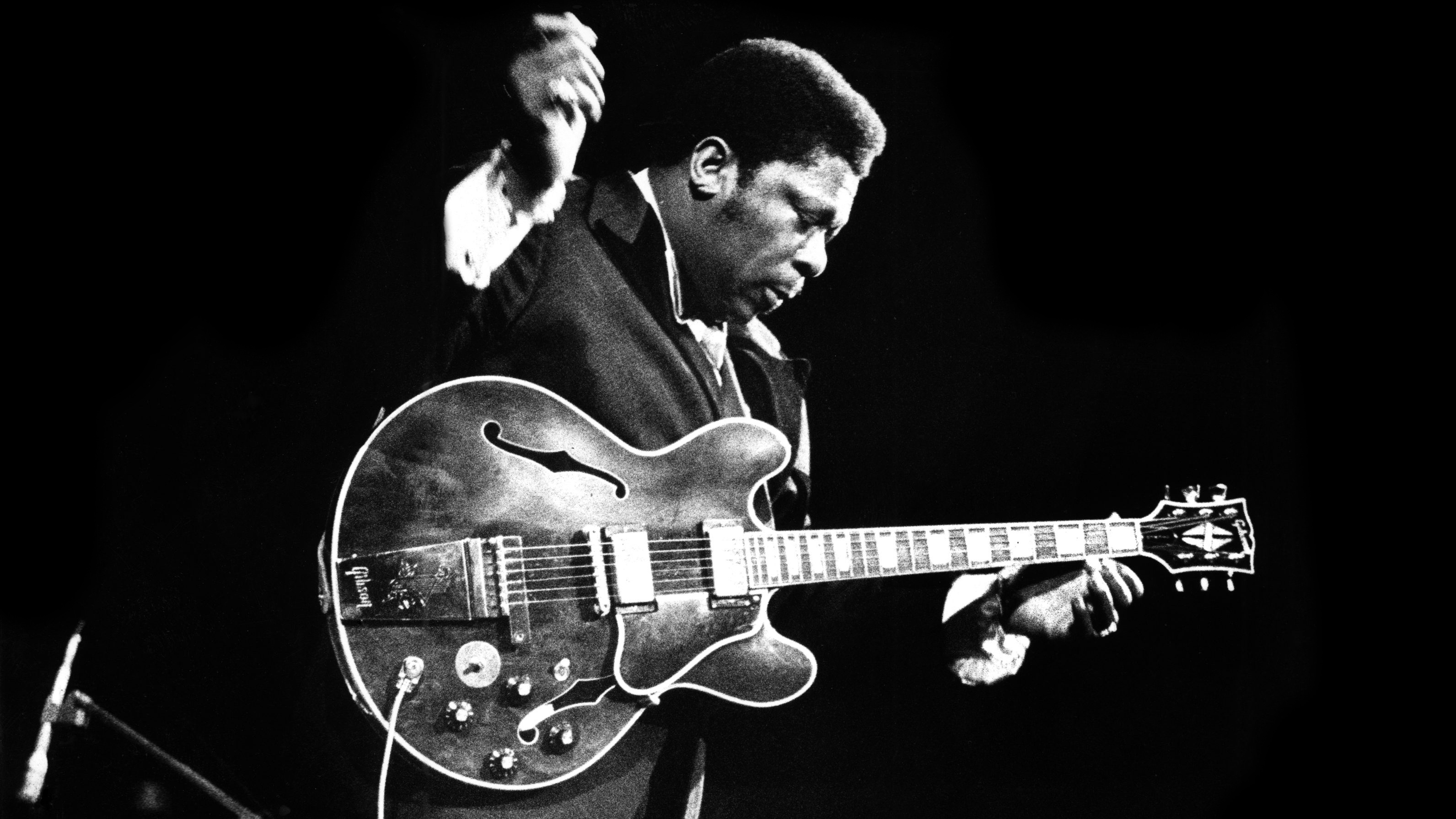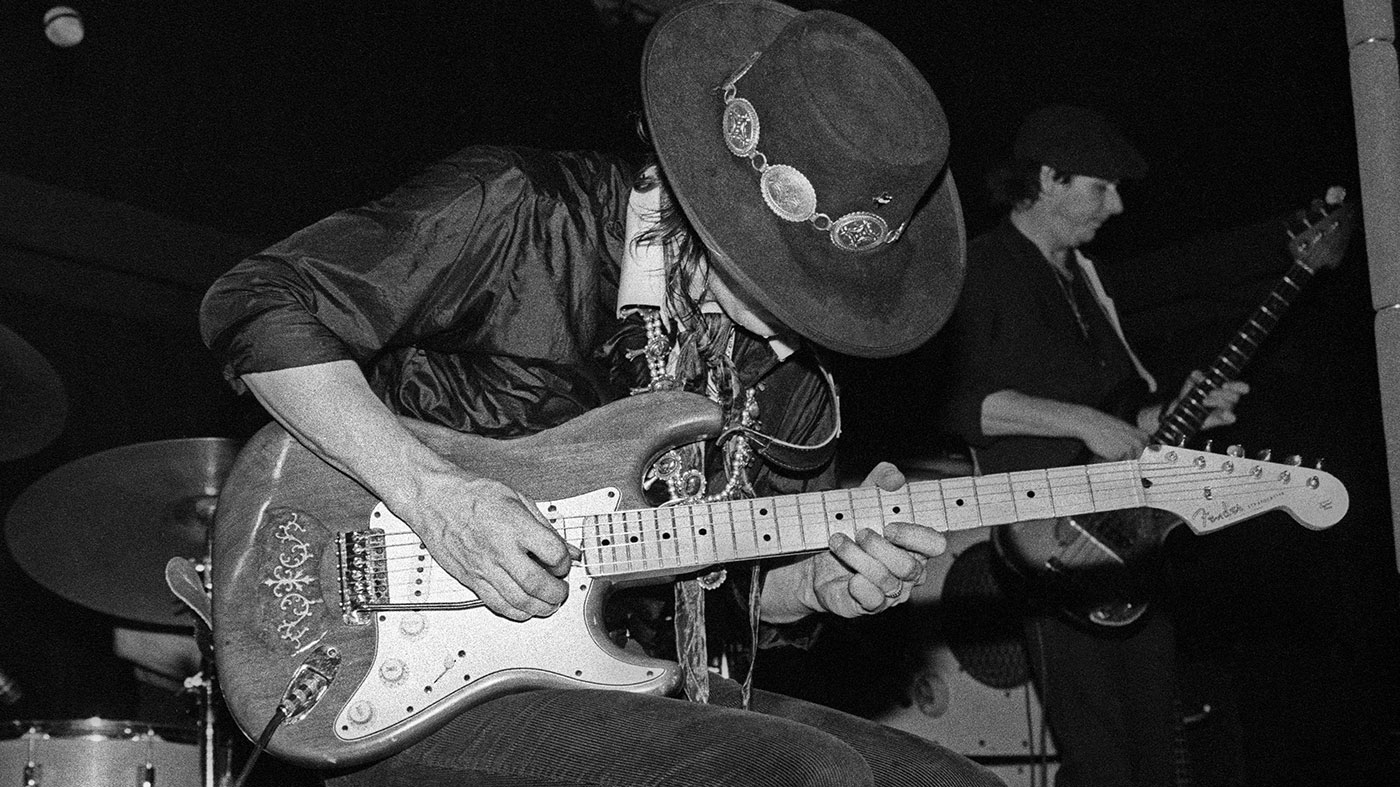Continuing our series on blues soloing tricks, we look at how to use the different intervals in blues playing, we come to the versatile 6. The 6 is not part of the minor pentatonic or blues scales, but it can be used to great effect in a blues in a couple of ways. You will find the 6 in the major pentatonic and Dorian scales, which can also be used over a blues, but in this lesson, we’ll look at its effect from the perspective of the minor pentatonic and blues scales.
First, get used to the sound of the 6 against the minor triad (1, b3, 5), with the major 3rd in there for reference, as we did in the previous lessons using the diagram below over an A7 chord, or an A drone.

The Gateway to the IV
Let’s say you’re improvising over a 12-bar blues in A. Your basic chords will be:
(I) A7 | (IV) D7 | (V) E7
Chances are you’ll play the minor pentatonic scale over the A7, which means you probably won’t play the 6. It’s good to hold it back because the 6th of A (F#) is also the major 3rd of the next chord, D7, which means when you go to that D7, you’ll be outlining the chord change in a very effective way, rather than just blowing past it with the minor pentatonic scale. Remember to get creative with your approach to that 6 – slide into it, bend up or down to it etc.
The Jazzy 6
Another way to use the 6 in a blues is simply to add it to the intervals we’ve already amassed in the previous lessons. Here are the three diagrams you’ll need:



To go through the process of building these sets of intervals, start here. The 6 will give you a jazzy sound in a blues and can be a little difficult to get hold of at first but keep blending it with the other intervals and you’ll soon be able to incorporate it into your playing.
Swap Out the b7
Another thing you can do with the 6 to make it stand out even more is to the replace the b7 with it. You’ll hear this a lot in Robben Ford’s playing as it gives a jazzy edge to your lines. Practice with the following three groups of intervals based around the minor triad:



These three perspectives on the versatile 6th interval should allow you to incorporate it into your blues playing in no time. Check out the previous lessons in this series:
Blues Soloing Tricks: How to Blend Major and Minor Sounds
Blues Soloing Tricks: What to Do with the 4
Blues Soloing Tricks: The Blue Note



